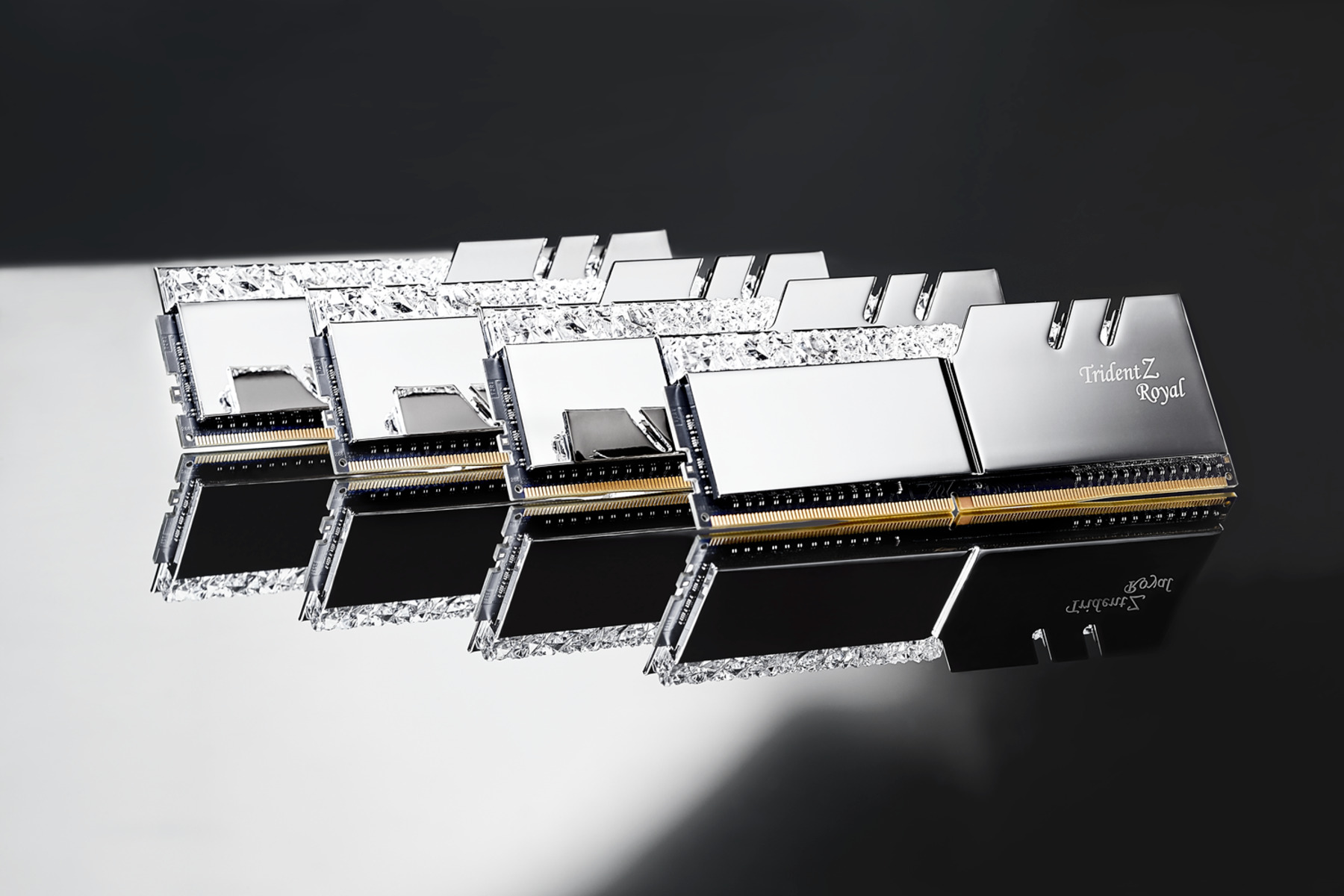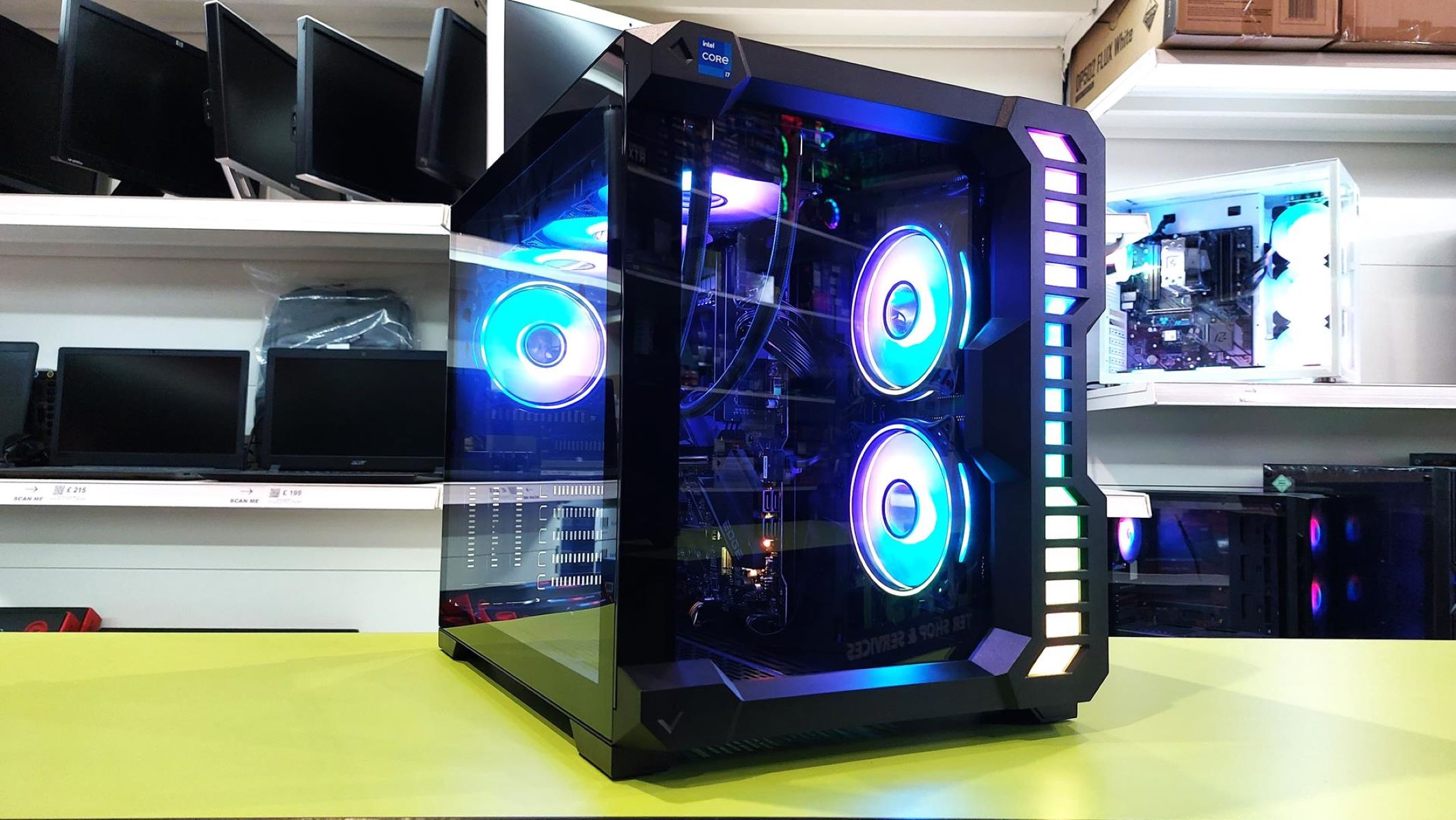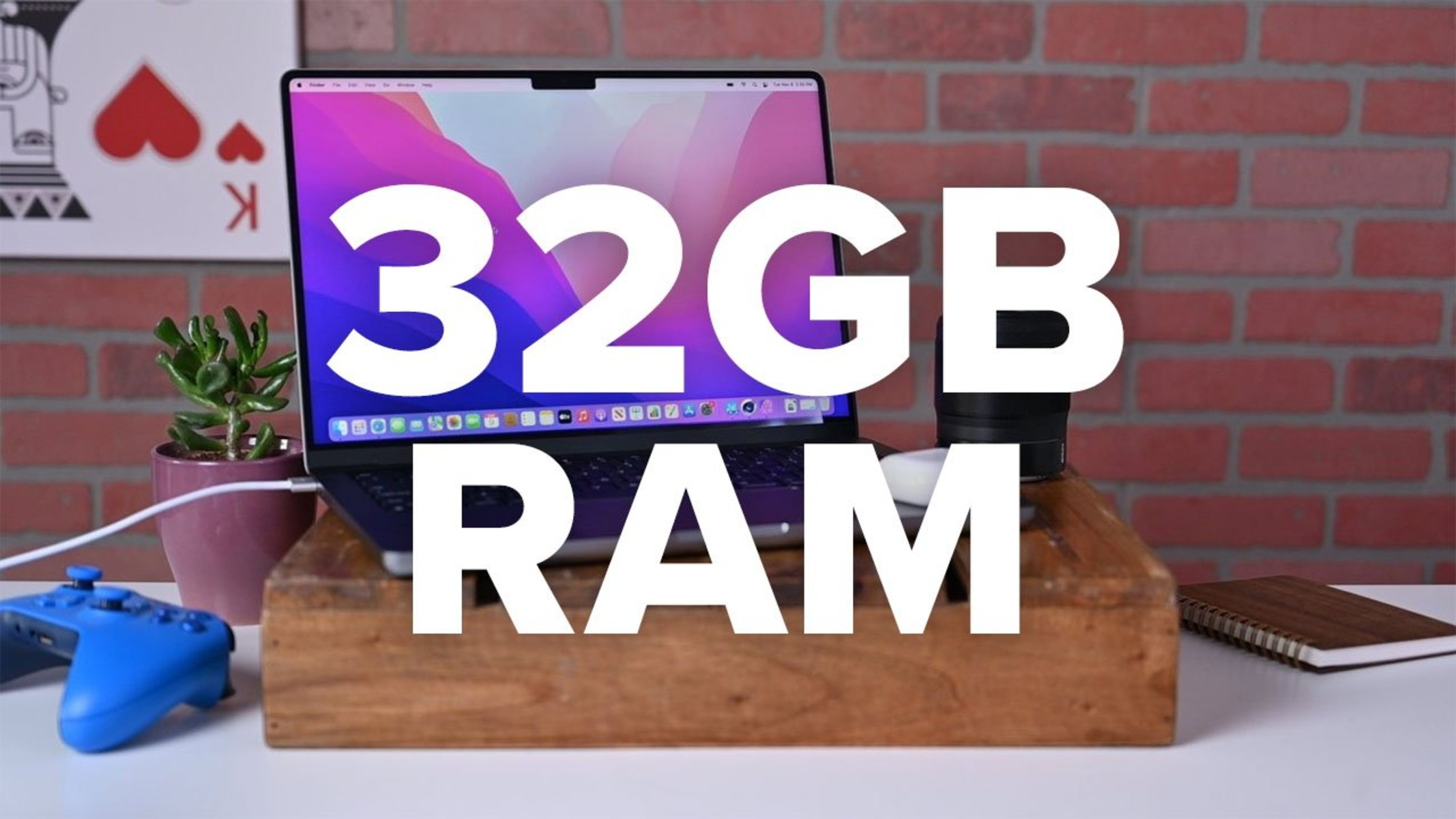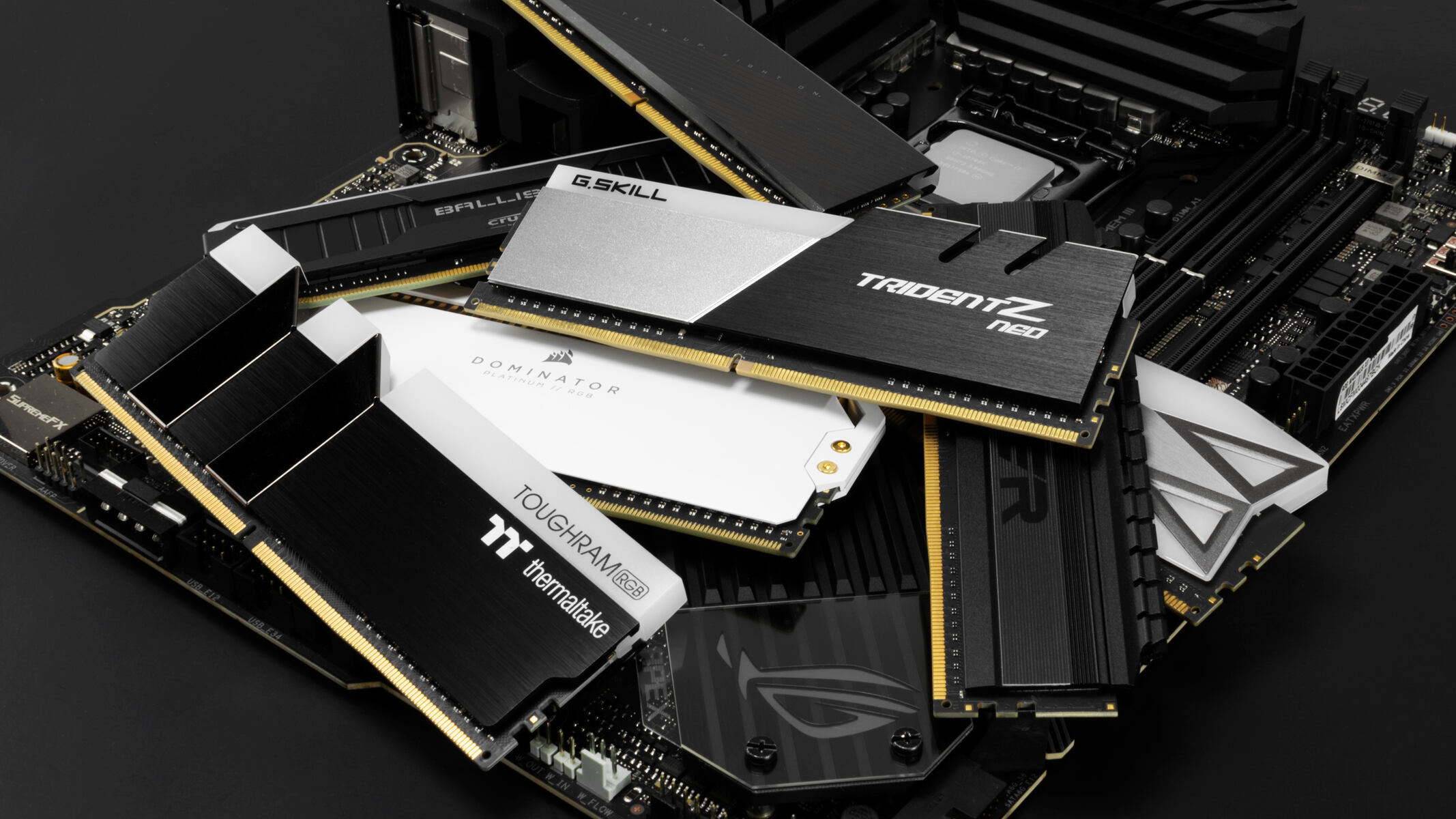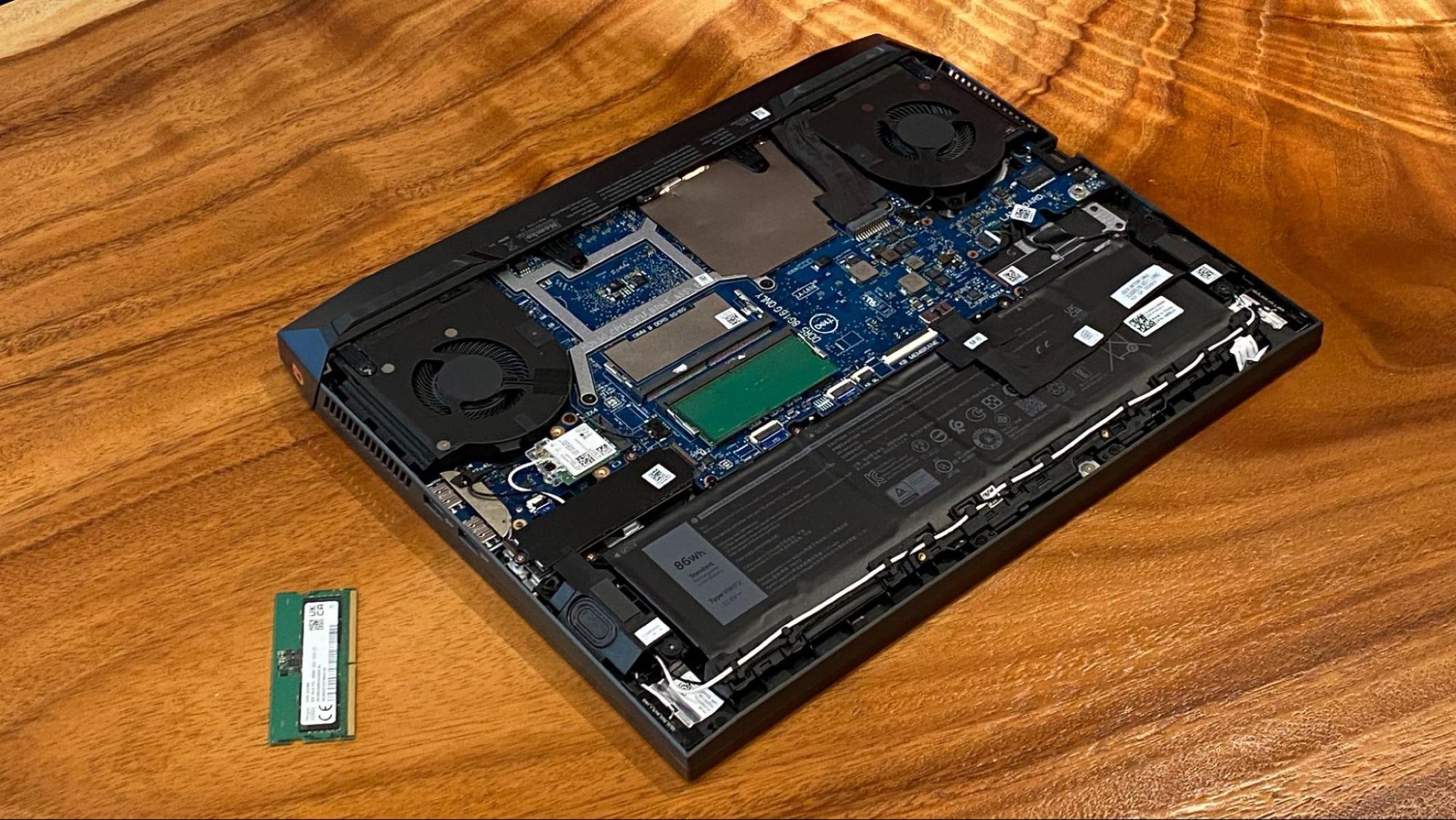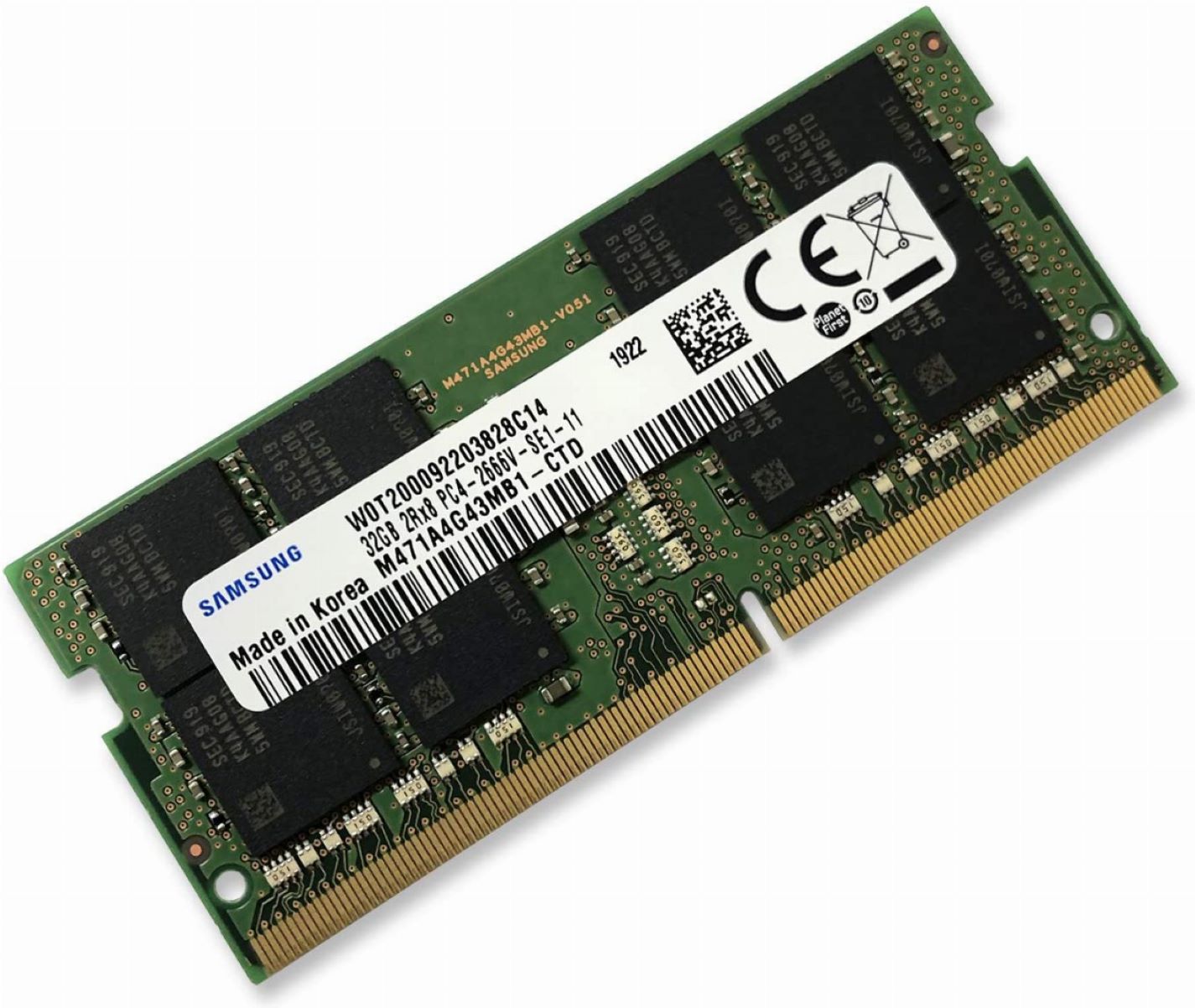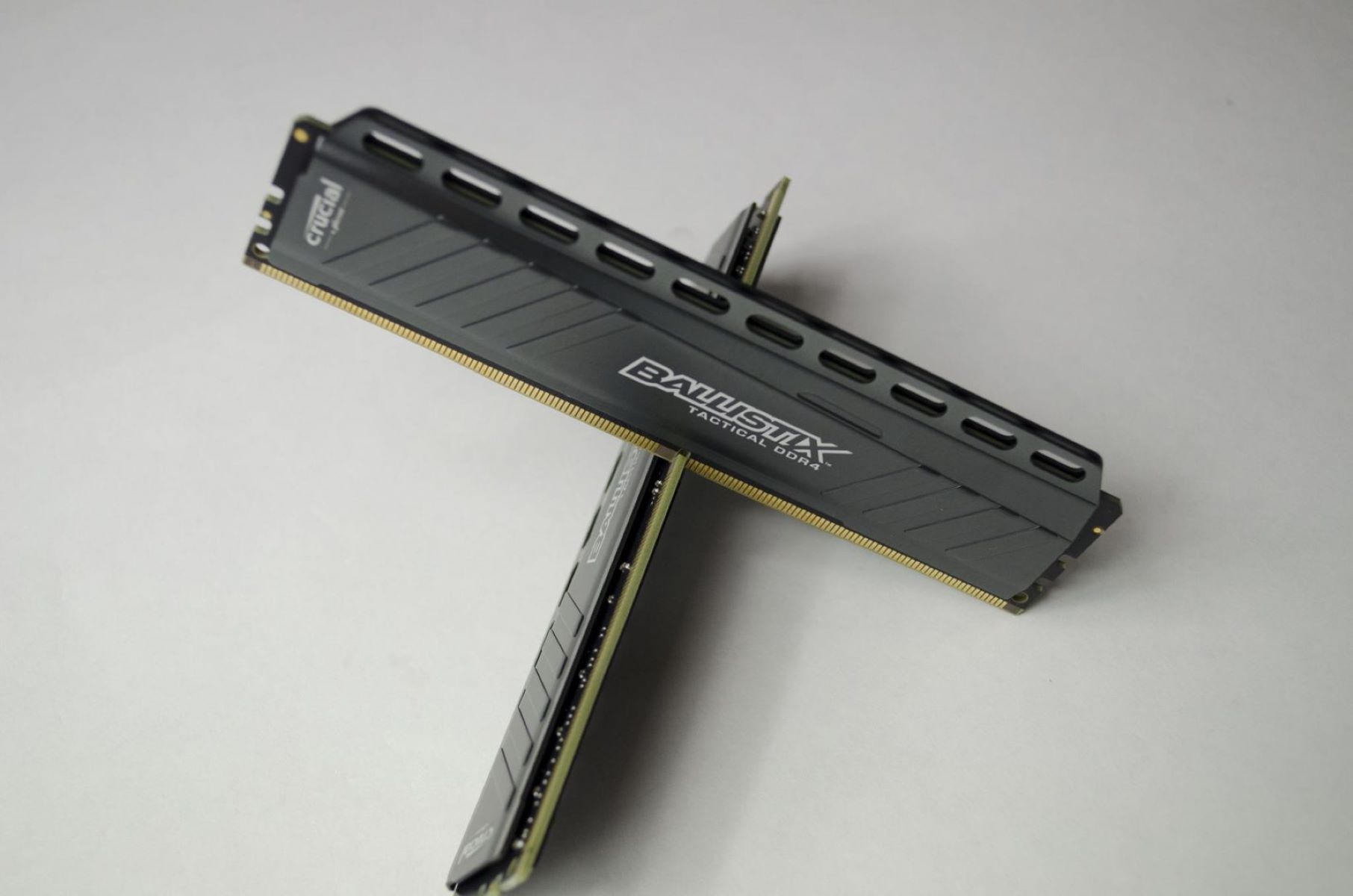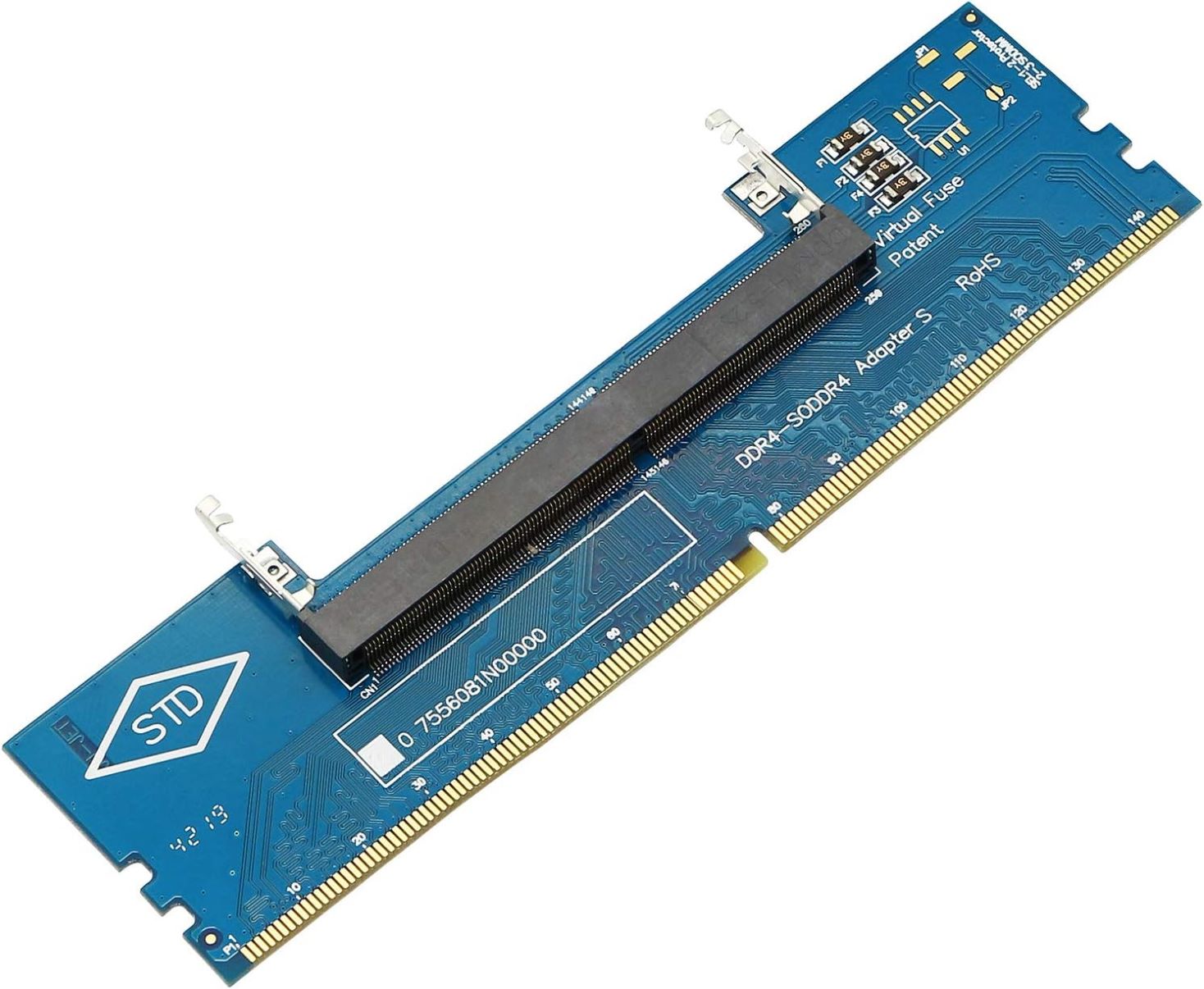Introduction
When it comes to RAM (Random Access Memory), having enough memory is crucial for a smooth and efficient computing experience. Whether you are a gamer, a graphic designer, a data analyst, or just a casual user, having sufficient RAM can significantly improve the performance of your computer. One commonly sought-after RAM configuration is 32GB of RAM, which offers a generous amount of memory for demanding tasks and multitasking.
However, the price of RAM can vary greatly depending on several factors, including the type of RAM, brand, and where you purchase it. In this article, we will dive into the cost of 32GB of RAM and explore the factors that can influence its price. Additionally, we will discuss different types of RAM, compare various brands, and provide guidance on where to buy 32GB RAM within a specific price range.
Upgrading your computer’s RAM can have a noticeable impact on its overall performance, especially if you currently have lower memory configurations. With 32GB of RAM, you can enjoy faster processing speeds, smoother multitasking, and improved responsiveness. However, before investing in 32GB of RAM, it is important to understand the cost implications and whether it is worth the investment.
So, in the following sections, we will explore the factors that affect the cost of 32GB RAM, the different types of RAM available, compare various brands, provide guidance on purchasing, and discuss whether upgrading to 32GB RAM is worth the cost. By the end of this article, you will have a clearer understanding of the pricing landscape for 32GB RAM and be able to make an informed decision regarding your computer’s memory upgrade.
Factors Affecting the Cost of 32GB RAM
Several factors can influence the cost of 32GB RAM, making it important to consider these aspects when purchasing memory for your computer. By understanding these factors, you can make an informed decision and find the best value for your budget. Let’s explore the key factors that affect the cost of 32GB RAM:
1. Type of RAM: The type of RAM you choose can have a significant impact on its price. There are different types of RAM, such as DDR3, DDR4, and DDR5. Each generation offers improved performance and efficiency, with DDR5 being the latest and most advanced. However, the latest generation tends to be more expensive, so it’s important to consider your specific needs and budget before deciding on the type of RAM.
2. Memory Speed: RAM operates at different speeds, commonly measured in megahertz (MHz). Higher-speed RAM can provide better performance, but it also tends to come at a higher cost. If you require fast and responsive computing, opting for higher-speed RAM may be worth the investment. However, for general use and everyday tasks, RAM with moderate speed can still deliver satisfactory performance and may be more cost-effective.
3. Brand: The brand of RAM can also impact its price. Well-known and reputable brands often charge a premium for their products. While these brands may offer excellent quality and reliability, there are also budget-friendly options available from lesser-known brands. It is essential to research customer reviews and compare prices to find the right balance between quality and affordability.
4. Timing and Demand: RAM prices can fluctuate due to market demand and supply availability. Prices may be higher during peak buying periods, such as holidays or major product launches, as demand often outweighs supply. Keeping an eye on price trends and timing your purchase strategically can help you secure the best deal.
5. Seller and Retailer: The seller or retailer you choose can also influence the cost of 32GB RAM. Different sellers may offer varying prices, discounts, and promotions. It is worth comparing prices across different online and offline stores to ensure you are getting the best possible deal.
Considering these factors can help you navigate the cost landscape when purchasing 32GB RAM. By understanding the type of RAM, memory speed, brand reputation, market timing, and seller options, you can make a well-informed decision that aligns with your budget and computing needs.
Different Types of RAM and Their Costs
When shopping for 32GB RAM, it is essential to understand the different types available and the corresponding costs. RAM technology has evolved over the years, leading to various generations and types of memory. Let’s explore the different types of RAM and their costs:
1. DDR3 RAM: DDR3 RAM is the older generation of memory and is typically the most affordable option. It offers decent performance for general computing tasks but may not be suitable for intensive gaming or resource-intensive applications. The cost of 32GB DDR3 RAM can range from around $100 to $200, depending on the brand and other factors.
2. DDR4 RAM: DDR4 RAM is the current standard for most computers and offers improved performance and efficiency compared to DDR3. It is more suitable for gaming, multimedia tasks, and professional work. The cost of 32GB DDR4 RAM varies between $150 and $300, depending on the speed, brand, and other features.
3. DDR5 RAM: DDR5 RAM is the latest generation of memory and provides the highest levels of performance and speed. It is designed for high-end systems and demanding applications. However, as it is relatively new, DDR5 RAM is also the most expensive option. The cost of 32GB DDR5 RAM can range from $300 to $500 or even higher.
It is worth noting that the prices mentioned here are general estimates and can vary depending on the brand, retailer, and market conditions. Additionally, higher-speed variants within each RAM type may come at a premium price compared to their standard counterparts.
When considering the type of RAM to purchase, it is crucial to assess your specific needs and budget. DDR4 RAM, being the current standard, offers a good balance of performance and cost-effectiveness for most users. DDR5 RAM, although more expensive, is suitable for those who require cutting-edge technology and high-performance computing.
Before making a purchase, it is advisable to research customer reviews, consult with experts, and compare prices across different sellers to get the best value for your money. Additionally, consider how the type of RAM will complement your computer’s other hardware components to ensure compatibility and optimal performance.
By understanding the different types of RAM and their associated costs, you can make an informed decision and find the right balance of performance and affordability when buying 32GB RAM for your computer.
Comparison of Various Brands
When it comes to purchasing 32GB RAM, considering the different brands available in the market is important. Each brand offers its own advantages in terms of performance, reliability, and customer support. Let’s compare some of the popular brands in the RAM industry:
1. Corsair: Corsair is known for its high-quality RAM modules and has a strong reputation among gamers and professionals. Their RAM modules offer excellent performance, reliability, and compatibility. However, Corsair RAM tends to be on the pricier side compared to other brands.
2. Kingston: Kingston is a well-established brand in the memory industry and offers a wide range of RAM options. They provide reliable and affordable RAM modules that are suitable for various computing needs. Kingston RAM is highly regarded for its compatibility and stability.
3. Crucial: Crucial, a subsidiary of Micron Technology, is known for its reliable and high-performance memory solutions. Their RAM modules offer good value for money and are often recommended for budget-conscious buyers who still prioritize reliability and quality.
4. G.Skill: G.Skill is renowned for its high-speed RAM modules, making it a popular choice among gamers and enthusiasts. Their RAM modules are known for their overclocking capabilities, allowing users to push their systems to the limits. However, G.Skill RAM may be priced at a premium due to its performance-oriented nature.
5. HyperX: HyperX, a division of Kingston, is dedicated to producing high-performance gaming memory modules. Their RAM modules are optimized for gaming and offer excellent reliability and performance. While HyperX RAM may be slightly more expensive, it provides great value for gamers and enthusiasts.
When comparing brands, it is important to consider factors such as price, performance, compatibility, and customer reviews. Additionally, check for warranties and after-sales support to ensure a smooth buying experience and peace of mind.
It’s worth noting that there are other reputable brands available in the market as well, and it’s essential to research and read customer feedback before making a final decision. Comparing prices and features across different brands can help you find the best RAM modules within your budget while meeting your performance requirements.
By comparing various brands, you can make an informed decision and select the brand that aligns with your specific needs, budget, and desired level of performance and reliability.
Where to Buy 32GB RAM and Price Range
When it comes to purchasing 32GB RAM, there are several options available, both online and offline. It’s important to explore different options to find the best deals and ensure a smooth buying experience. Here are some places where you can buy 32GB RAM:
1. Online Retailers: Online marketplaces such as Amazon, Newegg, and Best Buy offer a wide range of RAM options from various brands. These platforms often provide competitive prices and user reviews, making it easy to compare products and make an informed buying decision. Additionally, online retailers frequently run sales and discounts, further enhancing the value for money.
2. Manufacturer Websites: Many RAM manufacturers sell their products directly through their websites. Buying from the official website ensures that you are getting genuine and original products, and you may even find exclusive deals and promotions. However, prices on manufacturer websites may not always be the most competitive, so it’s worth comparing with other options.
3. Local Computer Stores: Visiting local computer stores allows you to physically inspect the RAM modules and seek expert advice from the staff. While prices may be similar to online retailers, you might be able to negotiate better deals or take advantage of in-store promotions. Additionally, buying from a local store ensures immediate availability and support if any issues arise.
4. Online Auctions and Classifieds: Platforms like eBay and Craigslist offer opportunities to buy 32GB RAM from individual sellers. Prices on these platforms can vary greatly, with the potential for finding good deals or used memory modules at a lower cost. However, exercise caution and ensure the seller has a good reputation and offers return policies.
The price range for 32GB RAM can vary significantly based on factors such as RAM type, brand, and seller. Generally, the price range for 32GB RAM starts around 0 for DDR3 RAM, with DDR4 RAM ranging from $150 to $300, and DDR5 RAM costing $300 or more. These prices are approximate and may fluctuate due to market conditions and promotions.
It’s recommended to compare prices across different sellers, read customer reviews, and consider any additional costs such as shipping fees or taxes. Additionally, keep an eye out for seasonal sales and discounts, especially during holidays or technology-related events, to secure the best possible price.
By exploring various buying options and comparing prices, you can find the most affordable and reliable sources to purchase 32GB RAM that fits your budget and meets your performance requirements.
Upgrading to 32GB RAM: Is it Worth the Cost?
Upgrading your computer’s RAM to 32GB can offer several benefits, but it’s important to evaluate whether the cost is justified based on your specific needs and usage. Let’s consider the factors that can help determine whether upgrading to 32GB RAM is worth the investment:
1. Intensive Workloads: If you frequently engage in tasks that require extensive memory usage, such as video editing, 3D rendering, or running virtual machines, upgrading to 32GB RAM can significantly improve performance. It allows for smoother multitasking, faster data access, and reduced loading times. For professionals and power users working with resource-intensive applications, the cost of 32GB RAM can be justified by the productivity gains gained from increased memory capacity.
2. Gaming: Gamers, especially those playing modern titles or running resource-demanding games, can benefit from having 32GB RAM. It provides the necessary headroom for smooth gameplay, faster loading, and better overall performance, particularly when multitasking while gaming. However, for casual gamers or those playing less demanding titles, the cost may not be justified, as 16GB RAM can often suffice.
3. Virtualization and Server Environments: If you use your computer for virtualization purposes or host servers, having 32GB RAM can significantly enhance your capabilities. It allows for running multiple virtual machines simultaneously or accommodating more concurrent users. For professionals in IT or software development, the cost of upgrading to 32GB RAM can be justified by the increased efficiency and reduced downtime.
4. Future-Proofing and Longevity: Investing in 32GB RAM can help future-proof your system against evolving software requirements. As applications and operating systems become more resource-intensive over time, having ample memory can ensure your system remains capable and responsive. If you plan to keep your computer for several years or want to postpone the need for an upgrade, the cost of 32GB RAM can be seen as a wise investment to extend the lifespan and usability of your system.
5. Budget Considerations: While 32GB RAM offers several benefits, it’s important to assess whether it fits within your budget. If the cost of upgrading to 32GB RAM compromises your ability to invest in other essential components, such as a faster processor or a better graphics card, it may be more prudent to allocate resources accordingly. Evaluating the overall performance gains and considering alternative upgrades can help you make the most cost-effective decision.
Ultimately, the decision to upgrade to 32GB RAM depends on your specific needs, usage patterns, and budget. It is advisable to evaluate your requirements, research the benefits, and consider the cost-benefit ratio before making a final decision. Additionally, consulting with experts or seeking advice from knowledgeable individuals can provide valuable insights to inform your choice.
By carefully weighing the benefits and costs of upgrading to 32GB RAM, you can determine whether it is worth the investment for your particular computing needs and ensure you make a decision that aligns with your budget and performance requirements.
Conclusion
When considering upgrading to 32GB RAM, it’s important to evaluate the cost, benefits, and your specific computing needs. Having 32GB of RAM can significantly improve performance, especially for resource-intensive tasks, gaming, virtualization, and future-proofing your system. However, it may not be necessary or cost-effective for all users.
Factors such as the type of RAM, memory speed, brand, and timing can affect the cost of 32GB RAM. Researching and comparing prices across different sellers, both online and offline, can help you find the best deals and value for money. Popular brands such as Corsair, Kingston, Crucial, G.Skill, and HyperX offer reputable options to consider.
While upgrading to 32GB RAM can offer several benefits, it’s important to assess whether the investment is justified based on your specific needs and budget. Evaluating the type of workloads you engage in, your usage patterns, and the potential for increased productivity or performance gains is essential in making an informed decision. Additionally, considering alternative upgrades and balancing your budget can help prioritize the components that will have the most significant impact on your system’s performance.
In conclusion, upgrading to 32GB RAM can be a worthwhile investment for those who engage in resource-intensive tasks, gaming, virtualization, or seek future-proofing. However, if your needs are more moderate or your budget is limited, it’s crucial to assess whether the cost of upgrading to 32GB RAM outweighs the benefits you would gain. By carefully considering your specific requirements and researching different brands and pricing options, you can make a decision that aligns with your needs, budget, and desired level of performance.







